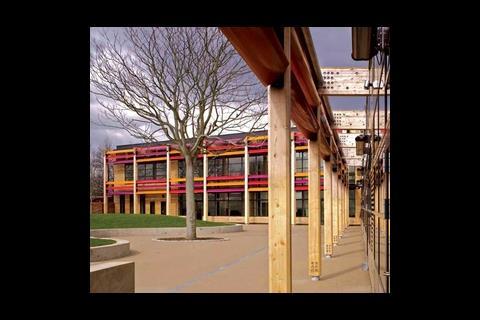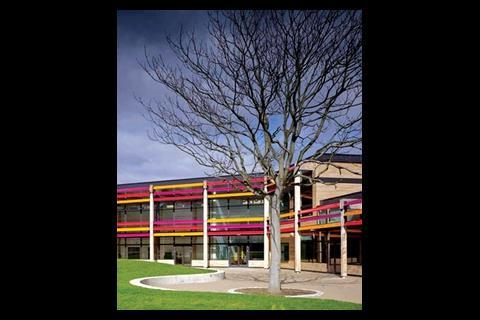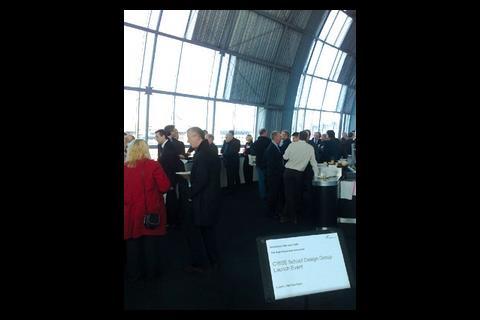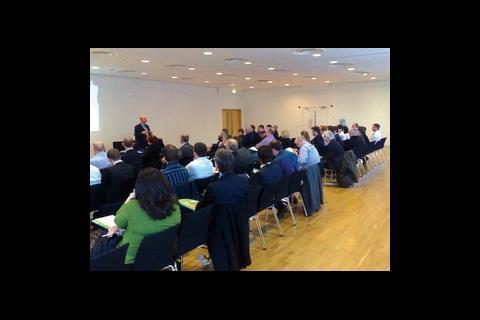Dejan Mumovic and John Palmer, of CIBSE’s newly launched School Design Group, identify the issues the group seeks to address. Photographs by Alan McAteer, Buro Happold
Winston Churchill once famously remarked: “We make our buildings, and afterwards they make us”. Although there is only limited research on the design of the first Victorian schools, it is conceivable that in the minds of their architects here was a link between outward expressions of grandeur and the importance of the learning that was going on within.
Designing schools in order to make some kind of statement is as important today as ever, but instead of grand architectural gestures the new generation of education buildings has to show how seriously the government takes its commitment to transform the UK into a knowledge-based low carbon economy.
To make this transformation, the government has committed to a massive programme of rebuilding and refurbishing schools in England and Wales. The Building Schools for the Future (BSF) programme, which will run for the next 10 to 15 years, is intended to build facilities for 21st century at a scale not seen since Victorian times.
In the UK, schools alone are responsible for 15% of the energy used in public and commercial buildings. Therefore, if the government is to meet a target of at least a 60% reduction against the 1990 baseline, and if it intends to set an example of low carbon economy for future generations, it clearly has to address the issue of schools’ carbon emissions. In the three years since the BSF launch, the issue of carbon has risen to the top of the political agenda and the current aspiration is to provide zero carbon new schools by 2016.
This aspiration appears to be very challenging, as demonstrated by a recent post-occupancy evaluation of five low energy BSF schools. Carried out by Buro Happold and Brunel University, the study showed that four of the schools emitted more carbon emissions than the median UK school building.
Another recent study carried out by Faber Maunsell, University College London, BSRIA and SRL showed that while the acoustic standards are demanding, it was possible to meet the criteria for indoor ambient noise levels, when external noise levels are not excessive, and still use natural ventilation to meet the requirements of Building Bulletin 101. However, in winter temperatures tended to exceed the design temperatures.
The results of both studies lead to the conclusion that the complex interaction between energy consumption, ventilation, thermal comfort and acoustics presents a considerable challenge for designers.
In addition there is an urgent need to address the impact of climate change issues.
A team led by Ian Taylor of Feilden Clegg Bradley Studios recently applied to the Royal Commission for the Exhibition of 1851 for funding to research adaptation of school design to the challenges of climate change. This was received with great interest and the study should start shortly.
Even if we had the answers on all technical issues, and a school is built to the most advanced sustainable standards, if the occupants are not using the buildings in a sustainable way, the benefits may not be apparent. We need to engage the whole school community – staff, facilities managers and pupils – in operating their schools in a sustainable and more environmentally responsible way.
These are just a few issues that the CIBSE School Design Group seeks to address by bringing together all stakeholders involved in school design – building services engineers, architects, construction managers, planning officers and building users. The group wants its legacy to be sustainable schools that can act as a catalyst for their local communities. The group’s terms of reference are:
• to foster knowledge exchange between all interested parties working on sustainable school design
• to develop a strategy for healthy and sustainable school buildings
• to encourage cooperation between different professional bodies and institutions of relevance for school design
• to reflect on changing procurement routes and design standards
• to identify gaps in the science of designing learning environments
• to initiate cooperation between academia and industry to resolve the problems of relevance to the industry
The group had its launch event in Newcastle at the fringe of the CIBSE/ASHRAE National Conference and was attended by more than 60 professionals and academics. A round table discussion on the BSF process included the views of wide range of stakeholders involved in the procurement and delivery of Newcastle BSF.
The host, Gordon Hudson of Mott MacDonald, summarised discussions of the meeting which identified the following issues of critical importance to the success of the BSF Programme and the delivery of low carbon schools:
• the need for technically well defined post-occupancy evaluation and generation of user understanding of the school building and its systems
• PFI/PPP process and the delivery of innovation
• the knowledge exchange processes within the consortium teams
• uncertainty related to modelling stage within the design process and it's conversion into availability criteria and payment mechanism standards
• the needs for streamlining of the overall delivery process
Forthcoming events
Bringing together people who share an interest is a vital part of the CIBSE Schools Design Group. Events are an excellent way of doing this in both formal and informal settings. We are actively contributing to two major events.
The first, on 7 July 2008, is a symposium which will discuss problems related to low carbon buildings including schools, their design and operational performance. To be held at University College London (UCL), the symposium is organised by IBPSA-England, CIBSE School Design Group, CIBSE Natural Ventilation Group and The Bartlett at University College London.
The School Design Group will actively contribute to the prestigious International Building Performance Simulation Association (IBPSA) conference which will be held at Strathclyde University in 2009. The group will promote the use of computer-based simulation of the school environment in research and practice, especially the use of various modelling tools to prove compliance with building bulletins. The first call for proposal for the IBPSA 2009 conference has been already announced.
For more registration details on both events, visit the CIBSE School Design Group website, www.cibse-sdg.org.
The group also plans to stage its own seminars and workshops covering a range of topics of interest to M&E engineers wrestling with designing zero carbon schools for the 21st century.
The CIBSE School Design Group’s launch event and Low Carbon Symposium were supported by UrbanBuzz, a UCL-led. programme that aims to develop new ways of delivering genuinely sustainable forms of development and community in London and the Southeast.
Source
Building Sustainable Design
Postscript
Dr Dejan Mumovic is lecturer in environmental design and engineering at the Bartlett School of Graduate Studies, University College London. John Palmer is director of Building Research at Faber Maunsell.
Original print headline: "A test we can't afford to fail" (Building Services Journal, June 2008)


























1 Readers' comment